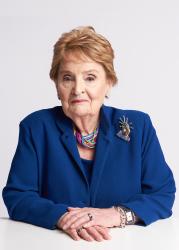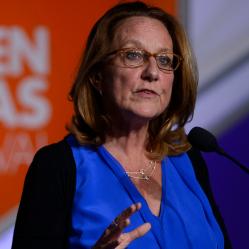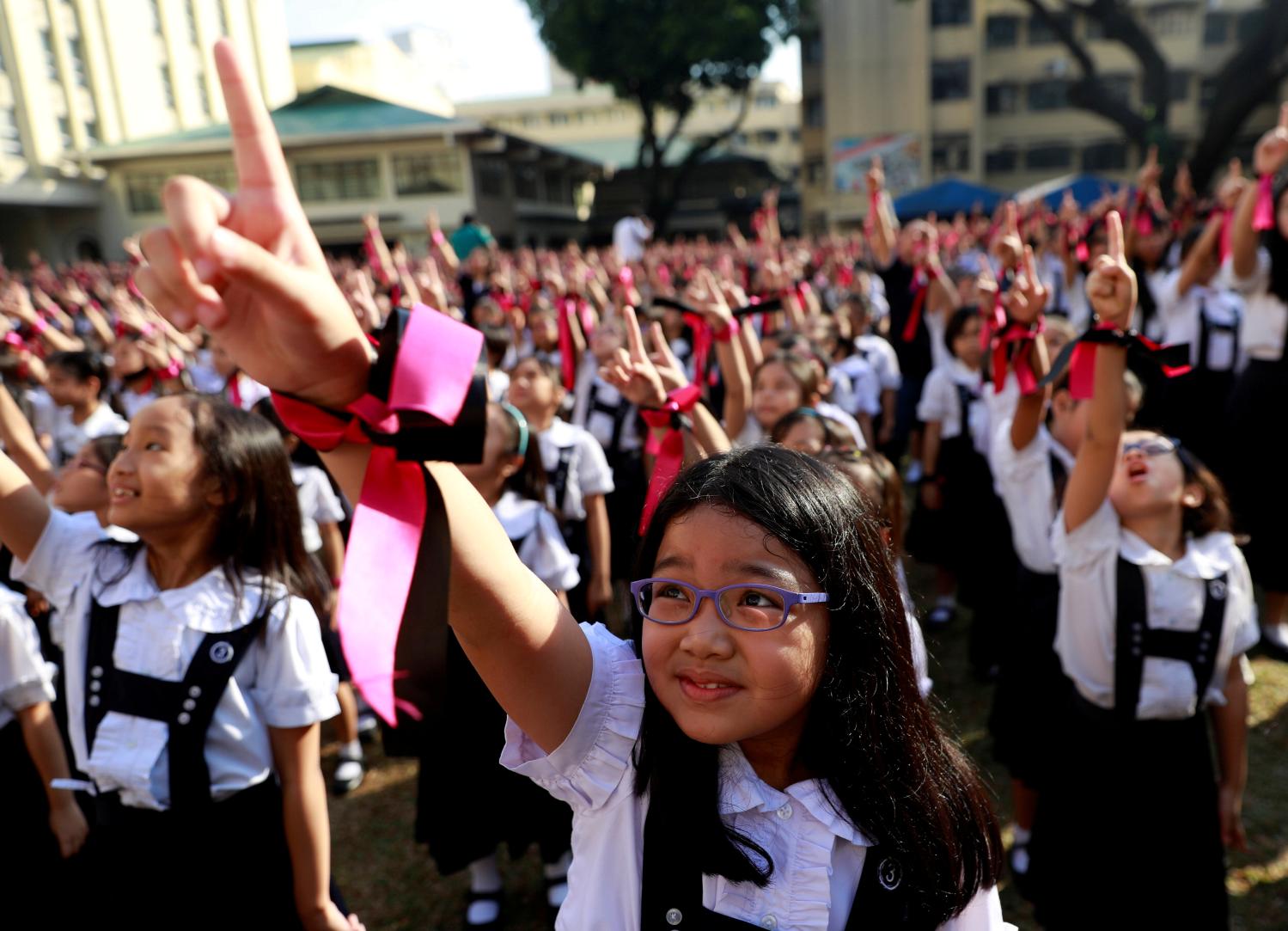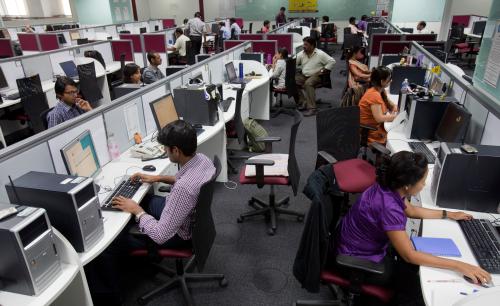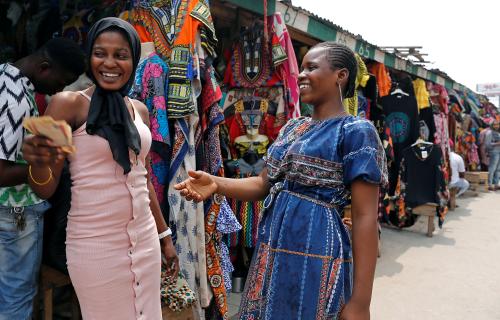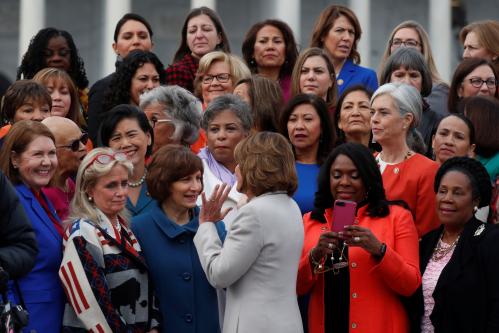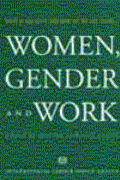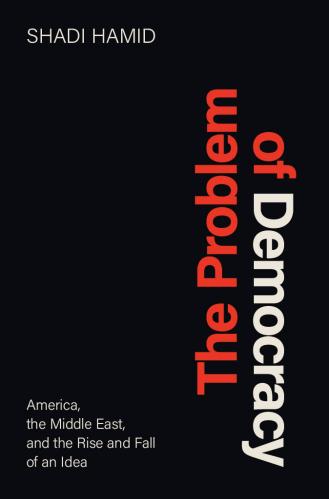The following is one of eight briefs commissioned for the 16th annual Brookings Blum Roundtable, “2020 and beyond: Maintaining the bipartisan narrative on US global development.”
In this brief, we call for the global community to propose a new “Transformative Agenda for Women for 2020 and Beyond” to realize the gains in gender equality to date and to push for advances in areas of lack of progress. We believe U.S. development assistance will be critical to realizing this vision.
Fourth World Conference on Women, Peace and Security in Beijing, 1995
Nearly 25 years ago, more than 47,000 women and men from all corners of the world made their way to Beijing and Huairou, China to issue a historic global call to action for women’s empowerment and gender equality. Over 17,000 participants, including government delegates, accredited NGO representatives, international civil servants, and media representatives gathered for the Fourth World Conference on Women, Peace and Security. An additional 30,000 global activists met in Huairou, a district outside of Beijing’s center city, to hold an energetic and powerful parallel NGO forum. Voices of women and men working for justice were heard throughout the 11-day conference, including Mother Theresa, Benazir Bhutto, and Bella Abzug. Also present was Hillary Clinton, the then U.S. First Lady, who famously declared that “human rights are women’s rights and women’s rights are human rights.”
Spirits soared as the emergent global women’s movement united with 189 Member States to promote and adopt the Beijing Declaration and Platform for Action, which set forth a framework for working to achieve gender equality and women’s empowerment. The groundbreaking document identified 12 critical areas that governments, the international community, and civil society agreed to prioritize to achieve the empowerment of all women: the environment, poverty, education, health, violence, armed conflict, economy, power and decisionmaking, institutional mechanisms, human rights, media, and the girl child.
The Beijing Declaration continues to provide guidance as a blueprint for achieving gender equality and women’s empowerment.
Progress and challenges for women
Over the past 25 years, we have seen progress in all 12 critical areas as well as some backlash against women. In recent years the #MeToo movement, launched in the U.S., revealed pervasive and widespread sexual violence and harassment in every industry and sector, with ripple effects across the globe. Last year, we also witnessed the unprecedented election of more than 100 women to the U.S. Congress. Additionally, this year, New Zealand’s Prime Minister, Jacinda Ardern, successfully implemented a national ban on automatic weapons after the attack in Christchurch; five nations—Rwanda, Cuba, Bolivia, Mexico, and Grenada—achieved gender equality in their parliaments; Sweden and Canada put forward feminist foreign and development assistance policies; and Ireland historically repealed a long-standing abortion ban. In global development, we witnessed major progress in key areas, including a 44 percent reduction in maternal mortality globally and a 40 percent decrease in child mortality. Progress has also been made in education, with an additional 41 million girls enrolled in primary school.

Areas of slower progress include political equality, reduction in violence against women, pay equity, legal ownership, economic participation, and access to reproductive health services. Only 23 percent of the world’s parliamentarians are women, and there are only 15 female world leaders. Thirty-five percent of the world’s women have experienced either physical or sexual violence. Globally, a woman earns only 77 cents for every dollar a man earns—at this rate of progress women will not realize pay equity until the year 2069. And, although we have made progress in access to reproductive health services in many regions, more than 200 million women around the world still lack access to reproductive health services.
There are several critical areas that require special attention. The Beijing Declaration did not explicitly address climate change, but did call for an integration of gender concerns and perspectives in policies for sustainable development. Today, climate change poses an existential crisis, with carbon emissions rising at an alarming rate, which will disproportionally impact the poorest nations, and women particularly. Eighty percent of climate refugees today are women. The recent Intergovernmental Panel on Climate Change (IPCC) report calls to limit global warming below 2 degrees Celsius, and, if possible, below 1.5 degrees Celsius. Women leaders have been instrumental in raising awareness of the nature of the environmental crisis we face and may be the force that inspires urgently needed action. At the recent G-20 Summit in Japan, the Women’s Forum for the Economy and Society issued a call to the G-20, “Taking the Lead for Inclusion: Women Leading Climate Action,” which builds upon women’s engagement at COP 21, the Rome Manifesto, and the UNFCCC Gender Action Plan adopted at the 23rd Conference of the Parties (COP 23.) The report calls for gender equality in climate decisionmaking bodies by 2030 in recognition of the critical role women play in fighting climate change, the impact of climate change on women, and the belief that transitioning to a green economy is an opportunity for women’s economic, political, and social progress.
In addition, lack of progress on women’s property rights requires renewed attention, especially as trends towards conservatism and nationalism roll back women’s legal rights in many nations. The U.N. Commission on Legal Empowerment of the Poor, on which two of this brief’s authors served (Albright and Robinson), noted in 2008 that women are half the world’s population, produce 60 to 80 percent of the food in developing countries, and are increasingly responsible for rural households, yet they own less than 10 percent of the world’s property. Statutory and customary property systems disenfranchise women and result in barriers to women owning, using, and transferring or inheriting property.
US development assistance for women in decline
As progress for women moves apace in many areas of the world, the current U.S. administration has called for major cuts in development assistance for women and girls, threatening and potentially reversing gains realized to date. For fiscal year 2020, the U.S. administration’s request for gender-related funding is $818 million, which includes $100 million for the Women’s Global Development and Prosperity Initiative launched by presidential advisor Ivanka Trump. In contrast, the Obama administration’s 2017 budget request included $1.3 billion for gender-related funding. Development assistance for women and girls is spread across several accounts within the U.S. International Affairs Budget, including the Economic Support Fund, Development Assistance, Global Health, Migration and Refugee Assistance, and International Narcotics Control and Law Enforcement. The largest areas of funding are in Global Health ($463 million for gender-related funding in fiscal year 2019) and Economic Support Fund/Development Assistance ($375 million for gender-related funding in FY19).
The transformative advances we have seen for women in reductions in maternal mortality, girls out of school, and child mortality were the result of major, concerted, and comprehensive global efforts to move the needle on progress for women and children in partnership with long-standing community-driven programs. Historic reductions in maternal mortality are largely due to significant increases in funding and comprehensive global and national campaigns and strategies, including national road maps, global leadership, and major public and private funding campaigns. Gains in girls’ education and child mortality, similarly, were the result of effective global campaigns and new and innovative financing efforts.
A transformative agenda for women in 2020 and beyond
Many are claiming that 2020 will be a historic year for women. The time is right for all of us to call for a new, transformative agenda for women in 2020 and beyond. Recent history has shown that transformative change—change that is important and lasting—takes place only when there is both major new investment and attention that rises above partisan concerns. The President’s Emergency Plan for AIDS Relief (PEPFAR), perhaps the best example of this, was enacted in 2003 under the leadership of George W. Bush and transformed the global response to the HIV/AIDS crisis, reversing stigma and inaction and immediately and dramatically making antiretrovirals and other key practices and services available to HIV/AIDS patients, saving millions of lives.
What will it take to realize transformative change to address persistent gender inequities and lack of opportunity and rights for women? We believe asserting the centrality of investments in women and girls is critical for the health of nations and the planet. Rising above the 17 Sustainable Development Goals and 169 indicators to measure progress, we call for a fresh, bold, and straightforward agenda for new investment in six key areas to realize progress for women and girls in all nations. We call upon the global community to identify key leverage points and actions in each of the following six areas:
- Political leadership
- The existential threat of climate change and food insecurity
- Economic status
- Reproductive health
- Gender-based violence
- Education
One of the most significant advances since the Beijing conference is the emergence of a broader, mainstreamed recognition that investing in women in any area of development yields appreciatively better results than a gender-neutral approach. The time has come for women’s issues to move from the sidelines to center stage, and to embrace and promote development assistance that puts women at the center. The demand for women’s equality has never been greater: The largest single demonstration in history took place on January 21, 2017, with more than 3.7 million men, women, and children taking to the streets of every major city in the U.S. and 1 million more joining in more than 200 marches in 60 countries, calling for women’s rights and equality. Recently, three leading organizers—Cecile Richards, Ai-Jen Poo, and Alicia Garza—founded the organizing platform Supermajority and 100,000 people signed up in its first few days. As we approach the 25-year mark after the Beijing conference, countries will submit country reports to the U.N. assessing progress towards Beijing’s 12 areas of action. Let us use this historic marker to recommit forcefully to move towards a more gender equal world, and to call for the U.S. to once again lead the world in development assistance for women. The time is right to broaden support for investing in women and girls and to recognize the power of women to heal nations and our planet.
